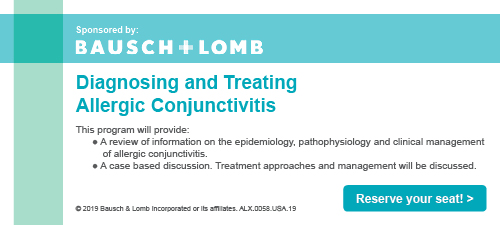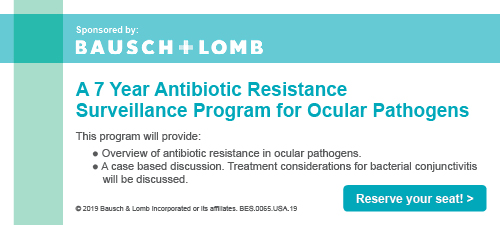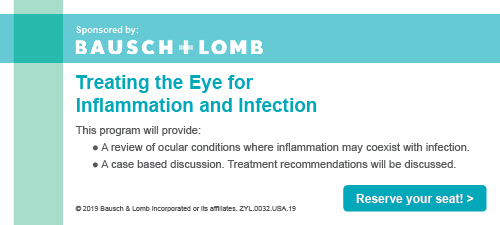
A
weekly e-journal by Art Epstein, OD, FAAO
Off the Cuff: Divine Intervention
I suspect that, at one time or another, all of us ponder why we are here. While a greater purpose is difficult to prove, my life has been filled with stunning near misses and inexplicable successes that go well beyond mere luck. I have experienced things that I clearly can’t explain. Working beneath my father-in-law’s massive Chrysler New Yorker when I was in optometry school, I looked up at the bottom of the huge wishbone suspension just inches above my head. I suddenly found myself viscerally uncomfortable as I glanced at the bottle jack holding the car up. Instantly, I realized that I should not be under an automobile that heavy held up by a bottle jack that small. Just seconds after I hurriedly slid out from under, the jack slipped and the car fell. Last week I was on a United Airlines flight with Shannon to visit a family member who is being treated for cancer. I am an American Airlines frequent flyer, but have only the lowest status on United. Oddly and inexplicably, we were upgraded from economy to first class at check-in. United planes are equipped with seat back video and I decided to watch inflight TV, something I never do. Suddenly, an advertisement for Neulasta, a drug to increase white cell count after chemotherapy, appeared out of nowhere.I usually tune out advertisements, especially for oddball drugs, but for some reason this time I paid full attention. When we finally arrived at our destination, our family member was in the hospital because of a dangerously low white cell count. You can probably guess what came next; it turned out that her oncologist had forgotten to order Neulasta, something we never would have discovered had I not been on that flight, upgraded for reasons I still don’t understand, and watched the inflight TV that I usually never do. I’ve spent a lot of time thinking about this. I’ve come to realize that these odd instances of clarity and salvation have been frequent threads in my life, although most are less dramatic and often go unnoticed. In the office, what I have chalked up to clinical intuition, on closer inspection can more easily be explained as something greater than experience or insight. Divine intervention? I’m not sure, but clearly there is more to this than meets the eye. Whatever it is, it is humbling.
|
|||||
 |
||
| Corneal Perforation After Nd: YAG Capsulotomy: a Case Report and Literature Review | ||||
Nd: YAG capsulotomy is the treatment of choice for posterior capsular opacification after cataract surgery. Researchers reported a case of corneal perforation following Nd:YAG capsulotomy in a patient with systemic scleroderma.
A 69-year-old woman presented with acute onset of blurred vision two weeks following Nd:YAG laser capsulotomy for posterior subcapsular opacification. On examination, her best-corrected visual acuity was 1/120, and bio-microscopy revealed a central full-thickness corneal laceration. Conservative treatment consisted of topical ocular antibiotics, cycloplegics, hypotensive drops and a soft therapeutic contact lens. Her final visual acuity improved to 6/18 with resolution of the corneal laceration. Researchers wrote that the possibility of corneal perforation after Nd-YAG capsulotomy in patients with systemic scleroderma and connective tissue disease should be kept in mind when treating such patients. |
||||
SOURCE: Khreish M, Hanna R, Berkovitz L, et al. Corneal perforation after Nd: YAG capsulotomy: a case report and literature review. Case Rep Ophthalmol. 2019;10(1):111-15. |
||||
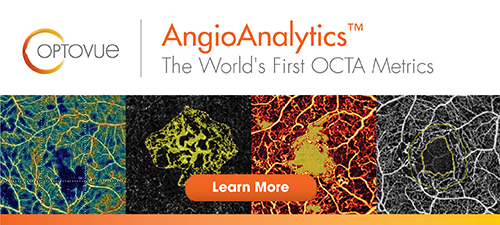 |
||
| Evaluating the Potential of Drug Eluting Contact Lenses for Treatment of Bacterial Keratitis Using an Ex Vivo Corneal Model | ||||
Corneal infections are treated by multiple instillation of eye drops each day. This study aimed to investigate the effectiveness of ofloxacin-loaded contact lenses as prolonged release devices for the treatment of bacterial keratitis. Two silicone hydrogel contact lenses (SHCLs) senofilcon A (Acuvue Oasys) and Narafilcon A (Acuvue TruEye) were modified by incorporation of ofloxacin alone or with vitamin E (VE). The drug uptake and in vitro release kinetics were investigated and the antibacterial efficacy was assessed against Staphylococcus aureus and Pseudomonas aeruginosa in an ex vivo rabbit corneal model.
The in vitro studies showed a higher uptake and longer duration of release by narafilcon A lenses compared with the senofilcon A lenses. The addition of VE led to a significant increase in duration of release for both lenses. The ex vivo studies confirmed the effectiveness of the ofloxacin-loaded lenses in the reduction of bacterial load to clinically insignificant levels and ofloxacin-vitamin E-loaded narafilcon A lenses in the reduction of bacteria on the corneas to undetectable levels. Investigators found that antibiotic-loaded lenses were effective in the treatment of ocular infections. They added that incorporation of vitamin E would sustain the effect and eliminate the need for multiple instillation of eye drops. |
||||
SOURCE: Ubani-Ukoma U, Gibson D, Schultz G, et al. Evaluating the potential of drug eluting contact lenses for treatment of bacterial keratitis using an ex vivo corneal model. Int J Pharm. 2019; May 11. [Epub ahead of print].. |
||||
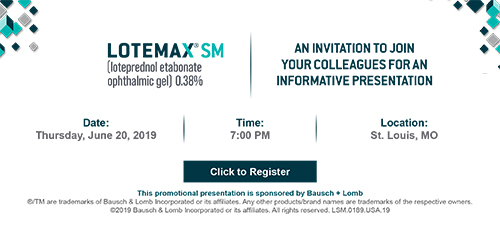 |
||
| Evaluation of The 24-hour Intraocular Pressure and Systemic Blood Pressure at The Same Time | ||||
To obtain simultaneous 24-hour contact lens voltage and systemic arterial blood pressure values with the Sensimed Triggerfish system and Holter monitoring device, ten primary open-angle glaucoma (POAG) and eight pseudoexfoliation glaucoma (PXG) patients were included in the study. The Sensimed Triggerfish contact lens device was used to calculate the 24-hour IOP, and a Holter sphygmomanometer device was used for simultaneous 24-hour blood pressure measurements. Researchers defined the 8am to 11pm period measurements as diurnal values and the other measurements as nocturnal values. The mean nocturnal systolic values (nocturnal SBP 120.5 ± 3.4 for POAG and 122.8 ± 5.3mm Hg for PXG) and diastolic BP (nocturnal DBP 70.2 ± 1.9 for POAG and 68.1 ± 1.2mm Hg for PXG) were lower than the diurnal (diurnal SBP 134.6± 5.3 for POAG, 145.9 ± 41.7mmHg for PXG, diurnal DBP 79.4 ± 5.8 for POAG and 78.6 ± 5.1mmHg for PXG) values, and these differences were statistically significant in both groups. In addition, nocturnal CL voltage values (228.8 ± 41.1 for POAG and 214.3 ± 47.0mVEq for PXG) were higher than the diurnal values (55.8 ± 77.2 for POAG and 145.9 ± 41.7mVEq for PXG) in the POAG and PXG groups, and these were statistically significant as well. In the POAG and PXG groups, CL voltage had a statistically significant negative correlation with systolic and diastolic BP values. Researchers observed that CL voltage values rose during the nocturnal period, with a concomitant decrease in systolic and diastolic BP. |
||||
SOURCE: Karadag R, Koyun E, Ozsoy I, et al. Evaluation of the 24-hour intraocular pressure and systemic blood pressure at the same time. J Fr Ophtalmol. 2019; May 16. [Epub ahead of print]. |
||||
| News & Notes | ||||||||||||||||||||||
| Acuity Pro Offers Animated Children’s Fixation Video That Pays Tribute to Dr. Frank Fontana Acuity Pro Digital Acuity Systems announced a new animated video short titled “Learn About Vision with Dr. Frank and Gwen.” The 90-second video will be used primarily as a distant fixation target while examining children when using the Acuity Pro Digital Acuity System. Acuity Pro comes standard with a few public domain cartoons, which will remain in the video library. Creators came up with the idea of animals giving other animals an eye exam and of the late Dr. Frank Fontana as a great K9 eye doctor. The video follows the exam of a nearsighted patient, a seagull named Gwen. With the blessing of Dr. Fontana’s son Frankie, creators added some often-said quotes from “Uncle Frank.” Frankie Fontana also provided a caricature of his father as a dog to inspire animators. The world premier viewing of the video will be at Optometry’s Meeting in St. Louis in June. Learn more. |
||||||||||||||||||||||
| Allergan, Sightsavers & the IAPB Announce Initiative to Address Glaucoma in Underserved Areas of The World Allergan, Sightsavers and the International Agency for the Prevention of Blindness announced a joint initiative—Keep Sight—to prevent glaucoma-related vision loss by building healthcare capacity in low- and middle-income countries with the highest unmet need. The initiative will provide training for healthcare professionals to screen at-risk populations, ensure early and accurate diagnosis, and provide appropriate treatment and long-term care in an effort to make a positive impact on people with glaucoma. The first program is due to launch at a high-volume hospital in Nigeria, with the goal of screening 5,000 people, treating 500 patients and providing surgery for 70 patients. Read more. |
||||||||||||||||||||||
| TheraTears SteriLid Antimicrobial Eyelid Cleanser and Facial Wash Now Available The new TheraTears SteriLid Antimicrobial 0.01% hypochlorous acid, two-ounce formula is designed to kill 99.9% of bacteria within 30 seconds, but is pH-balanced to be gentle on the eyelids, according to Akorn Consumer Health. While existing eyelid cleansers are more costly prescriptions or classified as cosmetics with the FDA, TheraTears SteriLid Antimicrobial is the first eyelid cleanser to be FDA-accepted as a medical device permitting the use of antimicrobial claims. It is also the first antimicrobial hypochlorous acid eyelid cleansing product available in retail stores such as Rite Aid, CVS and Walgreens, as well as through Amazon and U.S. eye care professional offices. Read more. |
||||||||||||||||||||||
| Lacrivera Introduces Synthetic Absorbable Lacrimal Plugs Lacrivera launched Vera180 Synthetic Absorbable Lacrimal Plugs, designed to provide extended temporary occlusion lasting approximately 180 days. According to the company, the plugs are ideal for treatment of post-surgical dry eye and for treating the dry eye components of various ocular surface diseases, including contact lens intolerance. Made of poly-p-dioxanone, they are available in sizes of 0.2mm, 0.3mm, 0.4mm and 0.5mm, and packaged in single pair and ten pair boxes (20 plugs). Learn more. |
||||||||||||||||||||||
| Revenio (Icare) to Acquire Centervue The Revenio Group signed an agreement to purchase the entire share capital of CenterVue, a global supplier of ophthalmic devices. The acquisition will support Revenio’s goal of strengthening its position as the global market leader in devices for the diagnostics and monitoring of the eye and glaucoma in particular. CenterVue’s retinal imaging innovations will enable Revenio’s product portfolio to expand beyond glaucoma and into retinal disease, such as diabetic retinopathy and age-related macular degeneration. Read more. |
||||||||||||||||||||||
|
||||||||||||||||||||||
|
Optometric Physician™ (OP) newsletter is owned and published by Dr. Arthur Epstein. It is distributed by the Review Group, a Division of Jobson Medical Information LLC (JMI), 11 Campus Boulevard, Newtown Square, PA 19073. HOW TO ADVERTISE |


